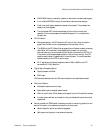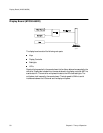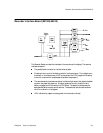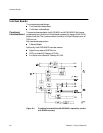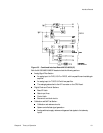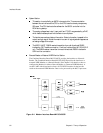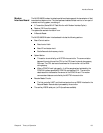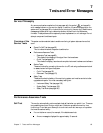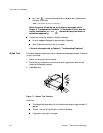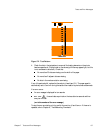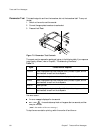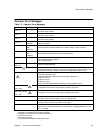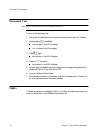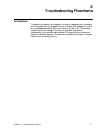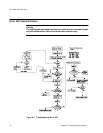
Chapter 7 Tests and Error Messages 65
7
Tests and Error Messages
Service Philosophy
Any errors produced are marked on the trace paper with the symbol and a specific
error message is shown on the monitor display. In addition, the errors are reported on the
system error log (see page 38 for instructions on how to print the error log). Read the error
messages and system error log to determine whether the fault lies in the hardware or
firmware. These problems can be repaired by board replacement or unit exchange. Do not
attempt component-level board repair.
Overview of the
Service Tests
The system contains resident tests to enable monitoring of system status and errors that
occur.
Power-On Self Test (see page 65)
This is invoked whenever the system is switched on.
Performance Assurance Tests
• Parameter Test (see page 68)
This checks the processing of the signal from the transducers.
• Quick Test (see page 66)
This checks the display, recorder and complete instrument hardware and software.
Service Tests
These are invoked by connecting the monitor to a PC and using a software service tool
to assess, test and configure the system.
• Cyclic Test (see page 35)
• Permanent Test (see page 70)
Safety Tests
These test the electrical safety of the monitoring system and must be carried out after
upgrades and repairs. You must use a safety testing tool.
• Instrument Safety Test (see page 105)
• System Safety Test (see page 105)
• Safety Test Blocks (see page 100)
Performance Assurance Tests
Self Test The monitor automatically performs a basic-level self test when you switch it on. There are
two possible types of error that you might see. A fatal error prevents the monitor from
functioning. A non-fatal error allows you to continue to work but warns you of a problem
that must be resolved swiftly.
If a non-fatal error occurs (for example, if the batteries are low):
An error message is displayed for approximately 13 seconds.



